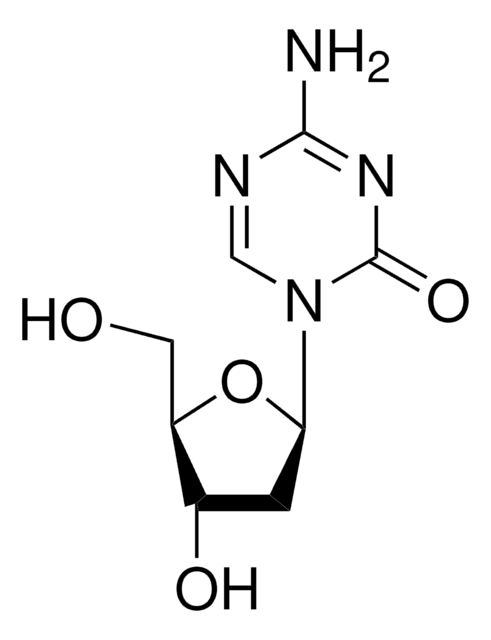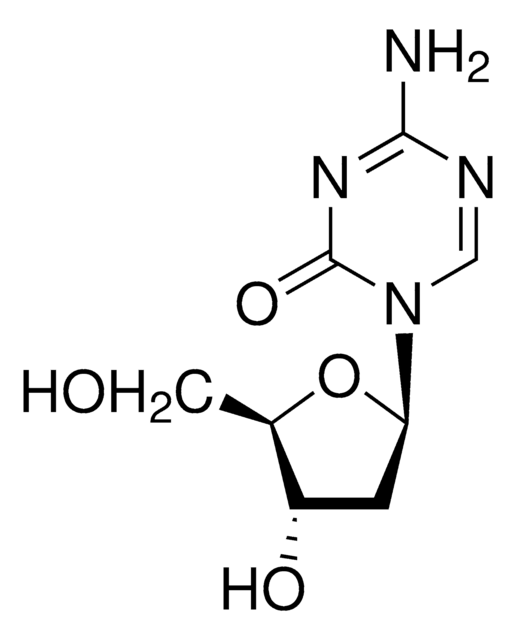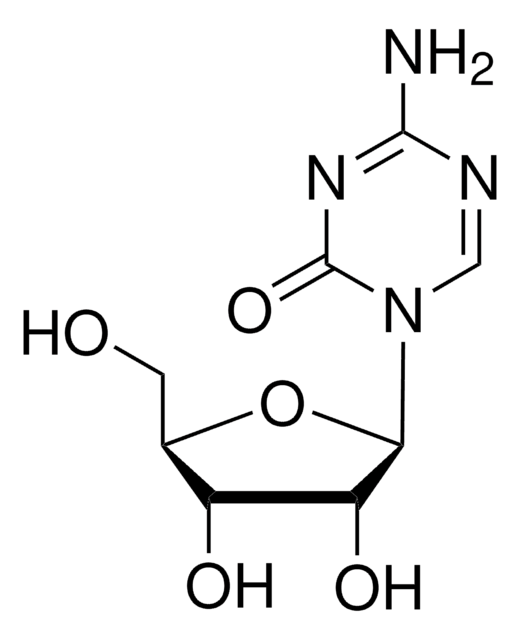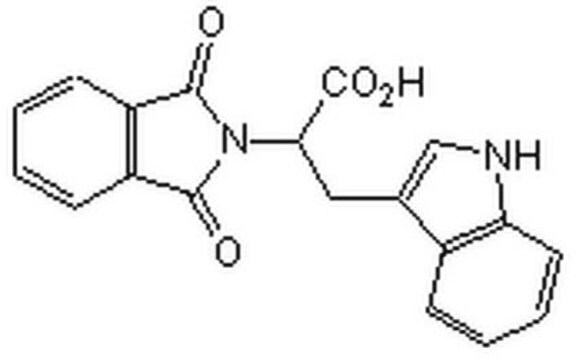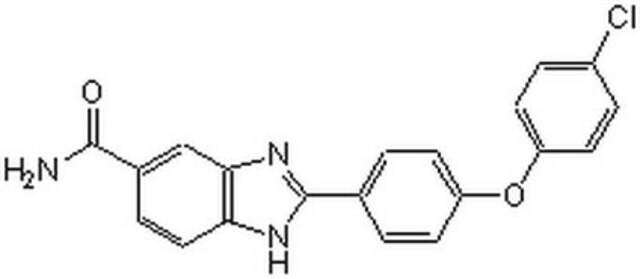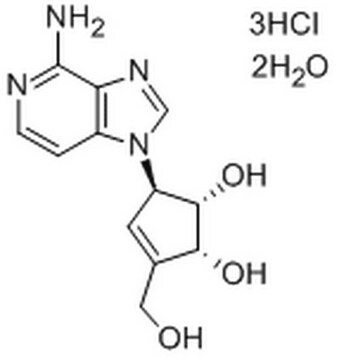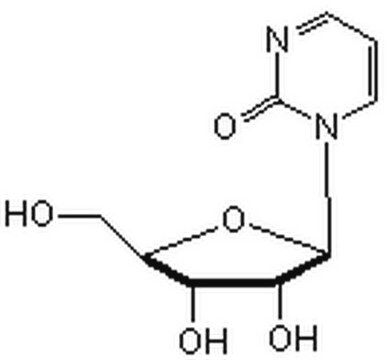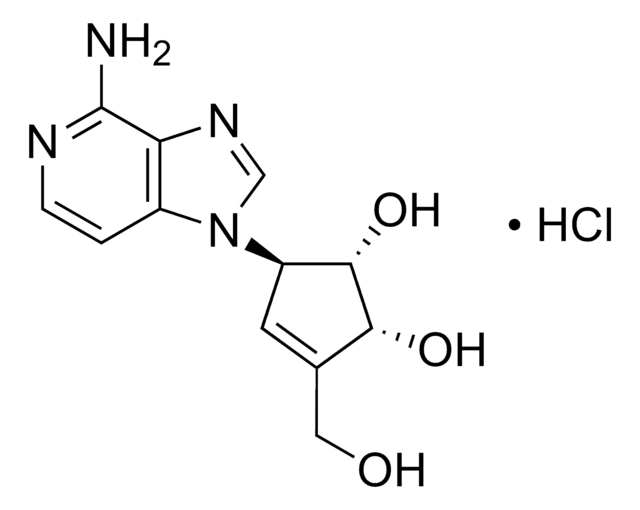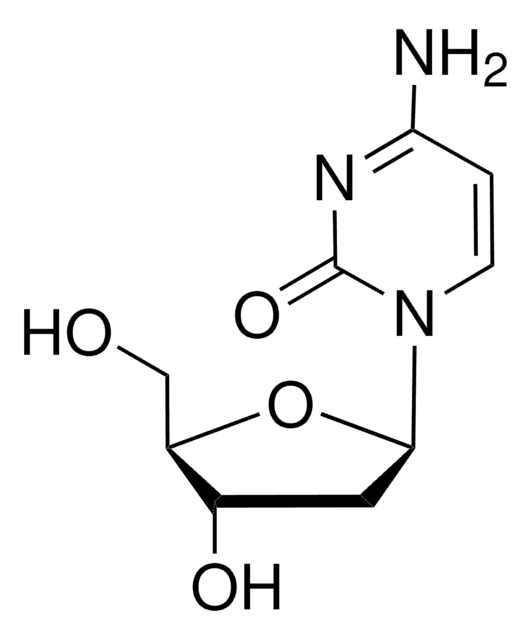189825
5-Aza-2′-Deoxycytidine
A cytosine analog that acts as a DNA methyltransferase inhibitor.
Sinonimo/i:
5-Aza-2′-Deoxycytidine, 5-Aza-CdR, 5-Aza-dC, 2′-Deoxy-5-azacytidine, Decitabine
About This Item
Prodotti consigliati
Livello qualitativo
Saggio
≥98% (HPLC)
Stato
lyophilized
Produttore/marchio commerciale
Calbiochem®
Condizioni di stoccaggio
OK to freeze
Solubilità
methanol: 1 mg/mL
50% acetic acid: 25 mg/mL
DMSO: 25 mg/mL
Condizioni di spedizione
ambient
Temperatura di conservazione
2-8°C
InChI
1S/C8H12N4O4/c9-7-10-3-12(8(15)11-7)6-1-4(14)5(2-13)16-6/h3-6,13-14H,1-2H2,(H2,9,11,15)
XAUDJQYHKZQPEU-UHFFFAOYSA-N
Descrizione generale
Azioni biochim/fisiol
DNA methyltransferase inhibitor
Confezionamento
Attenzione
Nota sulla preparazione
Ricostituzione
Altre note
Takebayashi, S., et al. 2001. Biochem. Biophys. Res. Commun.288, 921.
Zhu, W.G., et al. 2001. Cancer Res.61, 1327.
Hopkins-Donaldson, S., et al. 2000. Cancer Res.60, 4315.
Haaf, T. 1995. Pharmacol. Ther.65, 19.
Jones, P.A., and Taylor, S.M. 1980. Cell20, 85.
Note legali
Avvertenze
Danger
Indicazioni di pericolo
Consigli di prudenza
Classi di pericolo
Acute Tox. 4 Oral - Eye Irrit. 2 - Muta. 2 - Repr. 1B - Skin Irrit. 2 - STOT SE 3
Organi bersaglio
Respiratory system
Codice della classe di stoccaggio
6.1C - Combustible acute toxic Cat.3 / toxic compounds or compounds which causing chronic effects
Classe di pericolosità dell'acqua (WGK)
WGK 3
Certificati d'analisi (COA)
Cerca il Certificati d'analisi (COA) digitando il numero di lotto/batch corrispondente. I numeri di lotto o di batch sono stampati sull'etichetta dei prodotti dopo la parola ‘Lotto’ o ‘Batch’.
Possiedi già questo prodotto?
I documenti relativi ai prodotti acquistati recentemente sono disponibili nell’Archivio dei documenti.
I clienti hanno visto anche
Il team dei nostri ricercatori vanta grande esperienza in tutte le aree della ricerca quali Life Science, scienza dei materiali, sintesi chimica, cromatografia, discipline analitiche, ecc..
Contatta l'Assistenza Tecnica.